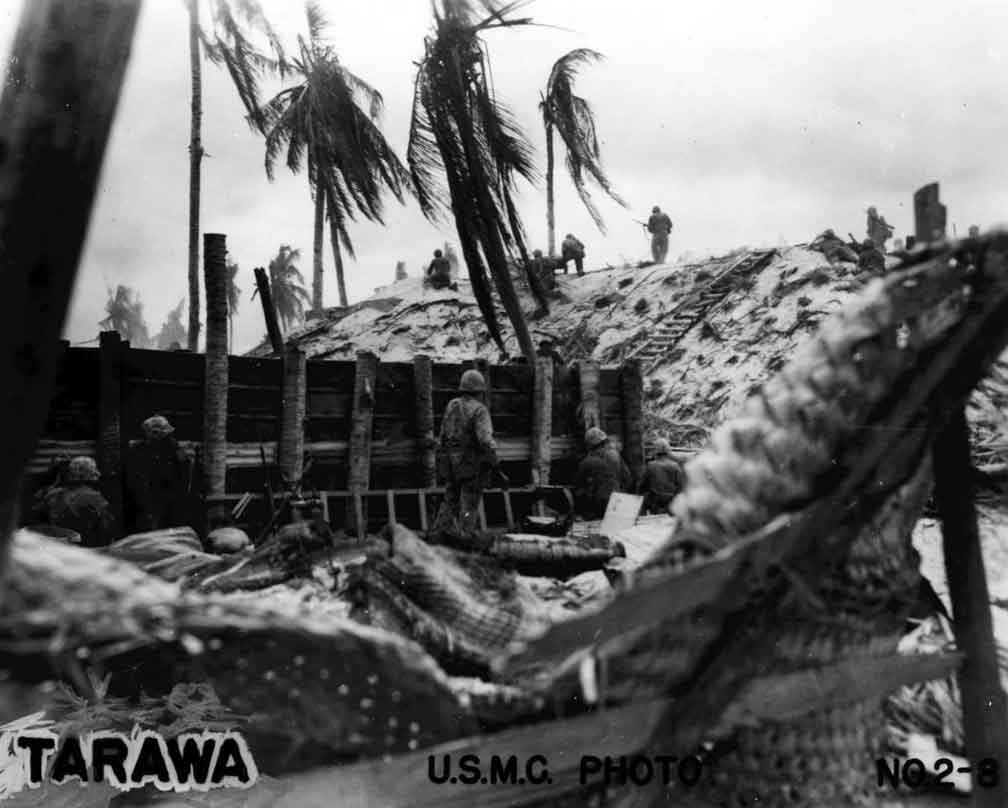November 20th 1943 Battle of Tarawa

Marines in Tarawa
Tarawa Island in the Gilberts was one the first islands in the Central Pacific to be invaded by the Americans. In a four day battle that cost over 2,000 American dead the island was captured.
Tarawa Atoll located in the Gilbert Islands blocked the American planned offensive in the central Pacific. In order to capture the Marshall Islands and from there the Marianas Islands Tarawa had to be captured. The Japanese had heavily fortified the island and had 2,636 troops and 2,200 construction workers on the Island.
The Allies sent the largest armada to date in the Pacific to attack the island. 17 aircraft carriers, 12 battleships, 8 heavy cruisers, 4 light cruisers, 66 destroyers and 36 transportation ships made there way to the Island. In total 1 US Marine division of 18,000 men plus another 18,000 army troops prepared to attack.
In the predawn hours of November 20th the American fleet began to bombard the island. It quickly destroyed 3 out of 4 of the Japanese heavy guns. After a three hour bombardment minesweepers entered the lagoon and cleared it of mines. Landing craft were guided into the lagoon ready to land. The first serious problem that developed was that the daily high tide that the navy was anticipating to allow the landing crafts to float over the reef did not materialize. As a result only smaller LVT’s could make it over the reef, limiting the numbers of troops that could make it ashore.
Those marines that eventually landed were forced to seek shelter at the sea wall. Despite strong Japanese resistance the overwhelming numbers of the American forced together with their strong air and sea support allowed them to slowly advance. By noon the Marines had reached the first line of Japanese defensive positions. In the afternoon the first American tanks were able to make it ashore and slowly the American forces advanced. By nightfall they had advanced halfway across the narrow island.
It took three more days to complete the capture of the island. Whenever the marines or army troops were pinned down by a Japanese defensive position a naval gun would successfully eliminate the obstacle. Fighting remained fierce but the outcome was never in doubt. The cost was high. On the fourth day the escort carrier USS Liscome Bay was sunk by a Japanese submarine. 687 sailors went down with the ship. A total of 1,689 American service men lost their lives and2,101 were wounded. All of the casualties , occurred in four day of intensive fighting.
 >
>